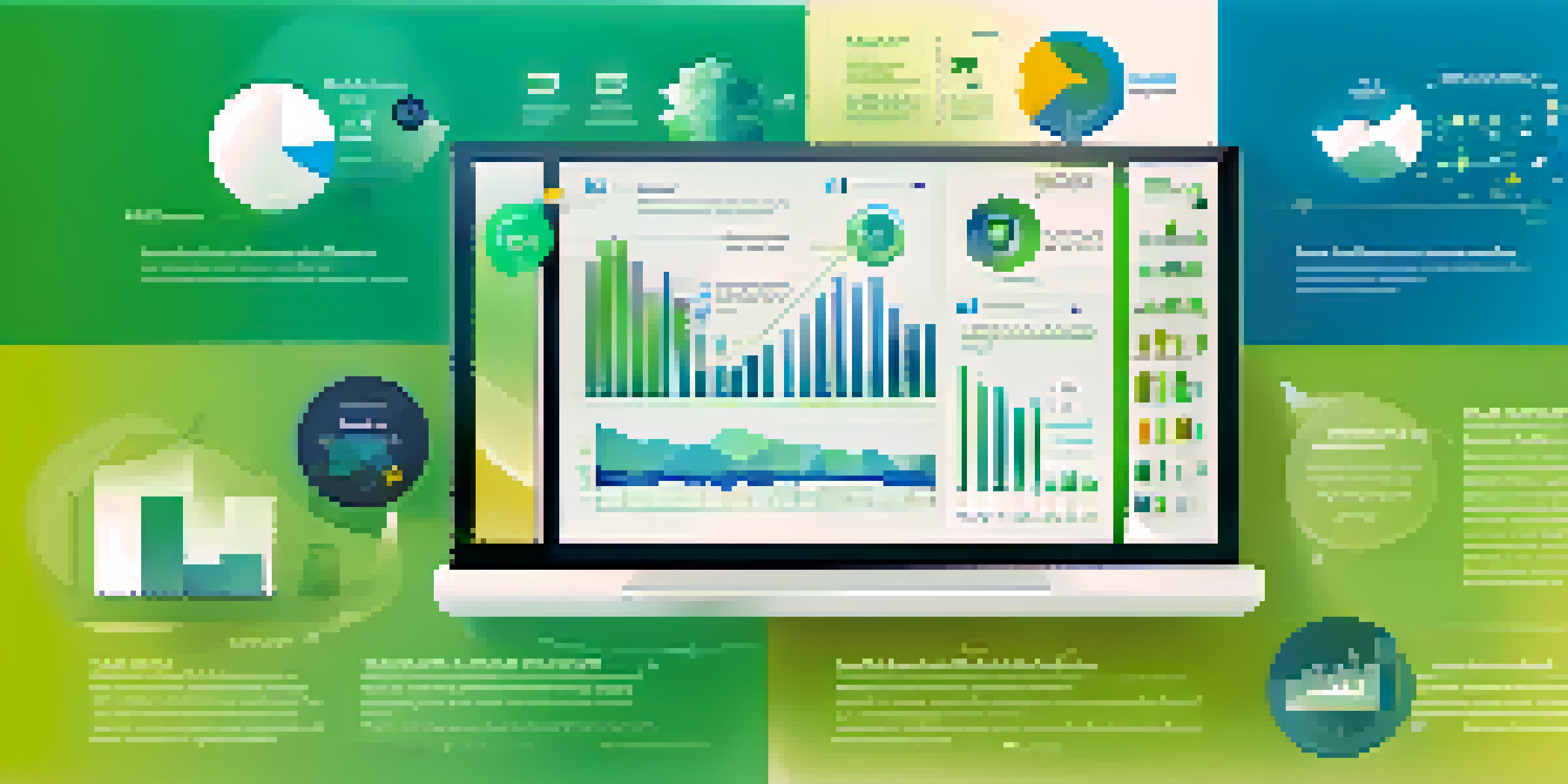Understanding Business Intelligence: Key Concepts Explained

What is Business Intelligence and Why Does It Matter?
Business Intelligence (BI) refers to the technologies and strategies used by companies to analyze data and make informed decisions. It encompasses a variety of tools and processes that help turn raw data into meaningful insights. In today’s data-driven world, effectively harnessing BI can be the difference between thriving and merely surviving.
Without data, you're just another person with an opinion.
Imagine trying to navigate a city without a map; that’s what running a business without BI feels like. BI provides a clear path through the vast landscape of data, highlighting trends and patterns that might otherwise go unnoticed. By leveraging BI, companies can enhance their operational efficiency, customer satisfaction, and overall profitability.
Moreover, BI is not just for large corporations. Small and medium-sized enterprises can also benefit from it, empowering them to compete on a more level playing field. With the right BI tools, businesses of any size can make data-driven decisions that lead to sustainable growth.
The Key Components of Business Intelligence Systems
At the heart of Business Intelligence are several key components: data sources, data warehousing, data analysis, and reporting. Data sources can include anything from customer databases to sales records. These components work together to create a comprehensive BI ecosystem that transforms data into actionable insights.

Data warehousing involves collecting and storing data from various sources in one central location. Think of it as a library where all your books (data) are neatly organized and easily accessible. This centralized storage makes analysis much simpler and more efficient, allowing businesses to draw insights from a wealth of historical data.
BI Transforms Raw Data into Insights
Business Intelligence helps companies analyze data to make informed decisions and improve operational efficiency.
Once the data is stored, it can be analyzed using various BI tools. These tools help identify trends, forecast future performance, and generate reports that inform decision-making. Ultimately, the goal is to provide stakeholders with clear and concise information that drives strategy and operational improvements.
Data Visualization: Making Sense of Complex Data
Data visualization is a crucial aspect of Business Intelligence, as it transforms complex data sets into easily digestible visuals. Charts, graphs, and dashboards help stakeholders quickly understand trends and insights without sifting through endless numbers. This visual approach not only enhances comprehension but also aids in communicating findings to non-technical audiences.
In God we trust; all others bring data.
Imagine trying to explain a complicated concept using only text; it can be daunting. However, when you present that concept visually, it becomes much clearer. BI tools often come equipped with powerful visualization capabilities that allow users to create compelling visual narratives from their data.
By utilizing effective data visualization techniques, businesses can spot patterns and anomalies that might otherwise remain hidden. This ability to quickly interpret data is vital for timely decision-making, allowing organizations to respond swiftly to market changes or operational challenges.
The Role of Predictive Analytics in Business Intelligence
Predictive analytics is a fascinating component of Business Intelligence that uses historical data to make forecasts about future events. By applying statistical algorithms and machine learning techniques, companies can gain insights into possible future outcomes. This proactive approach can significantly enhance strategic planning and risk management.
Think of predictive analytics as having a crystal ball that gives you a glimpse into the future. It allows businesses to anticipate customer needs, optimize inventory levels, and even identify potential risks before they become issues. In an era where agility is paramount, this foresight can be a game-changer.
Data Quality is Crucial for BI Success
High-quality data ensures accurate insights, which are essential for effective decision-making in Business Intelligence.
By integrating predictive analytics into their BI strategies, organizations can make informed decisions with a higher degree of confidence. This leads to better resource allocation, improved customer experiences, and ultimately, increased profitability.
The Importance of Data Quality in Business Intelligence
Data quality is a cornerstone of effective Business Intelligence. Poor-quality data can lead to inaccurate insights and misguided decisions, undermining the entire BI effort. Ensuring that data is accurate, consistent, and up-to-date is essential for deriving meaningful insights.
Imagine trying to solve a puzzle with missing pieces; it would be nearly impossible to see the complete picture. Similarly, without high-quality data, organizations risk making decisions based on incomplete or erroneous information. Regular data cleansing and validation processes are critical for maintaining data integrity.
Investing in data quality not only improves the reliability of insights but also builds trust among stakeholders. When decision-makers can rely on accurate data, they’re more likely to support BI initiatives and make strategic decisions grounded in facts.
Challenges in Implementing Business Intelligence Solutions
While Business Intelligence offers tremendous benefits, implementing BI solutions can come with its own set of challenges. Common hurdles include data silos, resistance to change, and the complexity of integrating new tools with existing systems. Recognizing these challenges is the first step in overcoming them.
Data silos, where information is isolated within departments, can hinder the effectiveness of BI. To address this, organizations must foster a culture of collaboration and data sharing. Breaking down these silos ensures that everyone has access to the same information, leading to more cohesive decision-making.
Emerging Trends Shape BI's Future
Technologies like AI and machine learning are transforming Business Intelligence, enabling deeper insights and automated analysis.
Additionally, change management is crucial when adopting BI solutions. Employees may be hesitant to embrace new technologies, so providing training and support can ease the transition. By addressing these challenges head-on, businesses can position themselves for successful BI implementation.
Future Trends in Business Intelligence
As technology continues to evolve, so does the landscape of Business Intelligence. Emerging trends such as artificial intelligence (AI), machine learning, and big data analytics are reshaping how businesses approach BI. Organizations that stay ahead of these trends will be better equipped to leverage data for competitive advantage.
AI and machine learning are particularly noteworthy, as they can automate data analysis and enhance predictive capabilities. This means that businesses will not only analyze past data but also gain deeper insights into future possibilities with less manual effort. The potential for innovation in BI is limitless.

Furthermore, as more organizations recognize the value of data-driven decision-making, the demand for advanced BI solutions will continue to grow. Companies that embrace these trends and adapt their strategies accordingly will not only survive but thrive in an increasingly data-centric world.